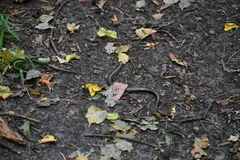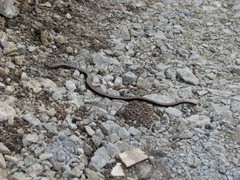©K. Groves, some rights reserved (CC-BY-NC)
©K. Groves, some rights reserved (CC-BY-NC)
©aliaska, some rights reserved (CC-BY-NC)
©aliaska, some rights reserved (CC-BY-NC)
©alderash, some rights reserved (CC-BY-NC)
©alderash, some rights reserved (CC-BY-NC)
©Daniel Santos Marques, some rights reserved (CC-BY-NC)
©Ricardo Solha, some rights reserved (CC-BY-NC)
©lwtalp, some rights reserved (CC-BY-NC)
©Viltė, some rights reserved (CC-BY-NC)
©Viltė, some rights reserved (CC-BY-NC)
©Viltė, some rights reserved (CC-BY-NC)
©falter20, some rights reserved (CC-BY-NC)
©falter20, some rights reserved (CC-BY-NC)
©ugnezzz, some rights reserved (CC-BY-NC)
©yarnerwood, some rights reserved (CC-BY-NC)
©Ivan, some rights reserved (CC-BY-NC)
©suerosie, some rights reserved (CC-BY-NC)
©thomascollin54, some rights reserved (CC-BY-NC)
©evh_germany, some rights reserved (CC-BY-NC)
©Enrico Tomschke, some rights reserved (CC-BY)
©alvaromp, some rights reserved (CC-BY-NC)
©alvaromp, some rights reserved (CC-BY-NC)
©alvaromp, some rights reserved (CC-BY-NC)
©Birdworld, some rights reserved (CC-BY-NC)
©Birdworld, some rights reserved (CC-BY-NC)
©yvant12, some rights reserved (CC-BY-NC)
©kaaresmoller, some rights reserved (CC-BY-NC)
©Giuseppe Molinari, some rights reserved (CC-BY-NC)
©Lioneska, some rights reserved (CC-BY-NC)
©dartingeye, some rights reserved (CC-BY-NC)
©dartingeye, some rights reserved (CC-BY-NC)
©Jan Puzio, some rights reserved (CC-BY-NC)
©Jan Puzio, some rights reserved (CC-BY-NC)
©Jan Puzio, some rights reserved (CC-BY-NC)
©Jan Puzio, some rights reserved (CC-BY-NC)
©thiesbue, some rights reserved (CC-BY-NC)
©theresajhi, some rights reserved (CC-BY-NC)
©J Castillo, some rights reserved (CC-BY-NC)
©J Castillo, some rights reserved (CC-BY-NC)
©KavonKaBae, some rights reserved (CC-BY-NC)
©Birdworld, some rights reserved (CC-BY-NC)
©Sven Bacher, some rights reserved (CC-BY-NC)
©austriansteve, some rights reserved (CC-BY-NC)
©Ricardo Ferreiro Sanjurjo, some rights reserved (CC-BY-NC)
©Ricardo Ferreiro Sanjurjo, some rights reserved (CC-BY-NC)
©Annika Lindqvist, some rights reserved (CC-BY)
©mortenjohnson, some rights reserved (CC-BY-NC)
©laurentdemeure, some rights reserved (CC-BY-NC)
©misskittys, some rights reserved (CC-BY-NC)
©Steve Daniels, some rights reserved (CC-BY-NC)
©Steve Daniels, some rights reserved (CC-BY-NC)
©Steve Daniels, some rights reserved (CC-BY-NC)
©charlieboult, some rights reserved (CC-BY-NC)
©reye, some rights reserved (CC-BY-NC)
©lenalill, some rights reserved (CC-BY-NC)
©tremoris, some rights reserved (CC-BY-NC)
©tremoris, some rights reserved (CC-BY-NC)
©tremoris, some rights reserved (CC-BY-NC)
©svend_heesche-andersen, some rights reserved (CC-BY-NC)
©morfa2010, some rights reserved (CC-BY-NC)
©ingehelene, some rights reserved (CC-BY-NC)
©amn2021, some rights reserved (CC-BY-NC)
©karen_watts, some rights reserved (CC-BY-NC)
©karen_watts, some rights reserved (CC-BY-NC)
©Wolfgang Bacher, some rights reserved (CC-BY-NC)
©Wolfgang Bacher, some rights reserved (CC-BY-NC)
©Wolfgang Bacher, some rights reserved (CC-BY-NC)
©Wolfgang Bacher, some rights reserved (CC-BY-NC)
©drosophila, some rights reserved (CC-BY-NC)
©Tomáš Chvojka, some rights reserved (CC-BY-NC)
©tjungbauer, some rights reserved (CC-BY-NC)
©tjungbauer, some rights reserved (CC-BY-NC)
©Ricarda Bergen, some rights reserved (CC-BY-NC)
©Ricarda Bergen, some rights reserved (CC-BY-NC)
©Mika Tomta, some rights reserved (CC-BY-NC)
©Mika Tomta, some rights reserved (CC-BY-NC)
©Mika Tomta, some rights reserved (CC-BY-NC)
©Mika Tomta, some rights reserved (CC-BY-NC)
©Jakob Fahr, some rights reserved (CC-BY-NC)
©Jakob Fahr, some rights reserved (CC-BY-NC)
©raulclima, some rights reserved (CC-BY-NC)
©Astrid, some rights reserved (CC-BY-NC)
©Astrid, some rights reserved (CC-BY-NC)
©Astrid, some rights reserved (CC-BY-NC)
©Astrid, some rights reserved (CC-BY-NC)
©Astrid, some rights reserved (CC-BY-NC)
©Astrid, some rights reserved (CC-BY-NC)
©koblmuel, some rights reserved (CC-BY-NC)
©Anton Dublang Arsuaga, some rights reserved (CC-BY-NC)
©Anton Dublang Arsuaga, some rights reserved (CC-BY-NC)
©zsiciarz, some rights reserved (CC-BY-NC)
©Fippe, some rights reserved (CC-BY)
©s130368, some rights reserved (CC-BY-NC)
©Penny, some rights reserved (CC-BY-NC)
©Håvard Rosenlund, some rights reserved (CC-BY-NC)
©Håvard Rosenlund, some rights reserved (CC-BY-NC)
©Alexei Romanov, some rights reserved (CC-BY-NC)
©André Viana, some rights reserved (CC-BY-NC)
©tapir2022, some rights reserved (CC-BY-NC)
©gimboid45, some rights reserved (CC-BY-NC)
©gimboid45, some rights reserved (CC-BY-NC)
©Lioneska, some rights reserved (CC-BY-NC)
©Valia Pavlou, some rights reserved (CC-BY-NC)
©Valia Pavlou, some rights reserved (CC-BY-NC)
©Valia Pavlou, some rights reserved (CC-BY-NC)
©Valia Pavlou, some rights reserved (CC-BY-NC)
©Valia Pavlou, some rights reserved (CC-BY-NC)
©Valia Pavlou, some rights reserved (CC-BY-NC)
©Nurislam Shaikhutdinov, some rights reserved (CC-BY-NC)
©Nurislam Shaikhutdinov, some rights reserved (CC-BY-NC)
©progre, some rights reserved (CC-BY-NC)
©raeubertochter, some rights reserved (CC-BY-NC)
©raeubertochter, some rights reserved (CC-BY-NC)
©raeubertochter, some rights reserved (CC-BY-NC)
©selinakemmer, some rights reserved (CC-BY-NC)
©Johannes, some rights reserved (CC0)
©rmjb, some rights reserved (CC-BY-NC)
©rmjb, some rights reserved (CC-BY-NC)
©Olha Bezsmertna, some rights reserved (CC-BY-NC)
©tarob, some rights reserved (CC-BY-NC)
©raphaelbatot, some rights reserved (CC-BY-NC)
©frank_lambert, some rights reserved (CC-BY-NC)
©Laurent Barthe, some rights reserved (CC-BY-NC)
©Chris, some rights reserved (CC-BY-NC)
©sasetka, some rights reserved (CC-BY-NC)
©Julien Reiners, some rights reserved (CC-BY-NC)
©nickw01, some rights reserved (CC-BY-NC)
©gpashley, some rights reserved (CC-BY-NC)
©em_wazo, some rights reserved (CC-BY-NC)
©em_wazo, some rights reserved (CC-BY-NC)
©jfb22, some rights reserved (CC-BY-NC)
©jfb22, some rights reserved (CC-BY-NC)
©faceless, some rights reserved (CC-BY-NC)
©Philip Schaffer, some rights reserved (CC-BY)
©Tat, some rights reserved (CC-BY-NC)
©Tat, some rights reserved (CC-BY-NC)
©Kay Meister, some rights reserved (CC-BY-NC)
©Bruno Durand, some rights reserved (CC-BY-NC)
©Jace, some rights reserved (CC-BY-NC)
©sarah_vogt, some rights reserved (CC-BY-NC)
©Birdworld, some rights reserved (CC-BY-NC)
©Víctor Huete, some rights reserved (CC-BY-NC)
©Víctor Huete, some rights reserved (CC-BY-NC)
©Laurent Barthe, some rights reserved (CC-BY-NC)
©Laurent Barthe, some rights reserved (CC-BY-NC)
©Jérémie Février, some rights reserved (CC-BY-NC)
©Helmut Schillo, some rights reserved (CC-BY-NC)
©Helmut Schillo, some rights reserved (CC-BY-NC)
©Adrian Kreft, some rights reserved (CC-BY-NC)
©Adrian Kreft, some rights reserved (CC-BY-NC)
©Adrian Kreft, some rights reserved (CC-BY-NC)
©Emil J Frederiksen, some rights reserved (CC-BY-NC)
©Emil J Frederiksen, some rights reserved (CC-BY-NC)
©megslam, some rights reserved (CC-BY-NC)
©kitkat22, some rights reserved (CC-BY-NC)
©lisa89schmitz, some rights reserved (CC-BY-NC)
©gallus_mrks, some rights reserved (CC-BY-NC)
©Alfonso Garmendia, some rights reserved (CC-BY)
©patos, some rights reserved (CC-BY-NC)































































































































































